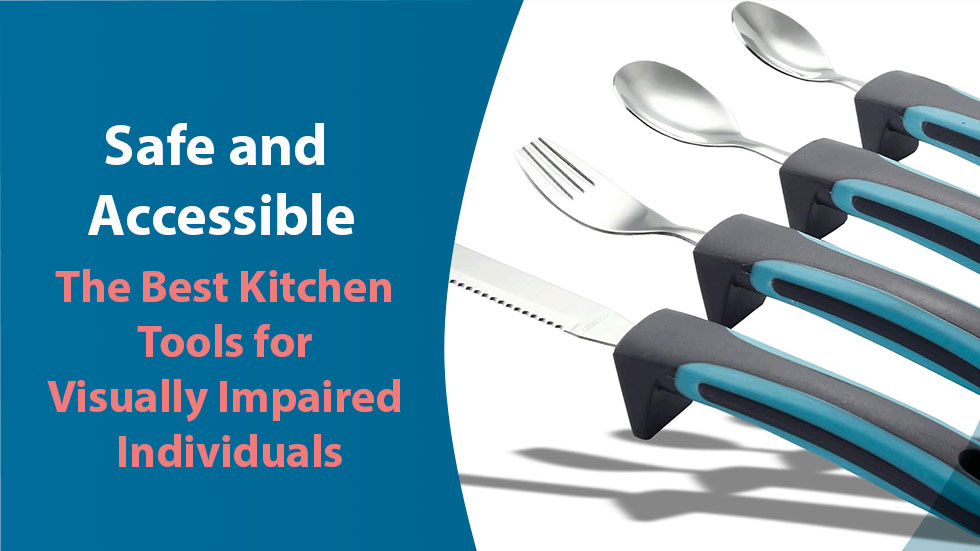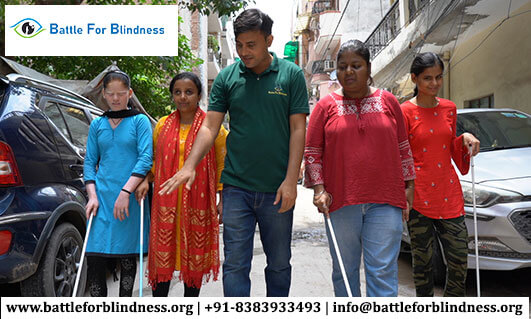
Cooking is a fundamental skill that everyone should be able to enjoy, regardless of visual impairment. With the right tools and adaptations, visually impaired individuals can navigate their kitchens safely and effectively. Here’s a guide to essential kitchen aids that can make meal prep easier and more enjoyable.
- Talking Kitchen Appliances
Talking kitchen appliances, such as talking thermometers, timers, and scales, are invaluable for visually impaired cooks. These devices announce measurements, temperatures, and cooking times, helping users avoid guesswork and potential mistakes.
Talking Thermometer: Ensures accurate cooking temperatures by audibly announcing the temperature of your food.
Talking Timer: Keeps track of cooking times and announces when it’s time to check your food.
Talking Scale: Provides weight measurements and can be used to ensure correct ingredient quantities.
- Braille and Tactile Labels
Braille and tactile labels can be applied to various kitchen items and ingredients, making it easier to identify and use them. These labels are especially useful for pantry items, appliances, and utensils.
Braille Labels: Help identify cans, spices, and other ingredients.
Tactile Markers: Can be added to appliances and utensils for easy identification.
- Adaptive Kitchen Utensils
Specially designed kitchen utensils can make a big difference. These utensils often have features tailored for easy handling and safety.
Adaptive Knives: Knives with large, textured handles and built-in safety guards can reduce the risk of accidents.
Non-Slip Cutting Boards: Ensure stability while cutting and chopping, reducing the likelihood of accidents.
Measuring Cups and Spoons: With tactile markings or auditory cues, these tools help ensure accurate measurements.
- Accessible Food Preparation Tools
These tools help in various stages of food preparation, making the process more manageable.
Food Processors and Blenders: Appliances with tactile controls and preset programs can simplify food processing tasks.
Electric Can Openers: Make opening cans easier and safer by eliminating the need for manual can openers.
Collapsible Colanders: Can be folded flat for storage and used with one hand for draining pasta or vegetables.
- Audible and Tactile Thermometers
Accurate temperature measurement is crucial in cooking. Audible and tactile thermometers can provide precise readings without needing to see the display.
Audible Thermometers: Announce the temperature of liquids or foods when inserted.
Tactile Thermometers: Have raised markers or Braille for easy reading.
- Voice-Controlled Appliances
Voice-controlled appliances, such as smart ovens and refrigerators, offer hands-free operation and can be integrated with voice assistants like Amazon Alexa or Google Assistant.
Voice-Controlled Oven: Allows you to set cooking temperatures and times using voice commands.
Voice-Controlled Refrigerator: This can help you manage grocery lists and check the contents of your fridge without having to see.
- Textured Kitchen Mats and Rugs
Textured mats and rugs can help with spatial orientation and prevent slips and falls in the kitchen. They provide tactile feedback to help you navigate different areas of the kitchen safely.
- Customizable Cooking Spaces
Creating an accessible cooking environment can enhance safety and efficiency. Consider these adjustments:
Ergonomic Work Surfaces: Adjustable counters and work surfaces can be customized to suit your needs.
Organized Storage: Use clear containers with tactile labels for easy access to ingredients and utensils.
Conclusion
With the right kitchen aids and adaptations, visually impaired cooks can enjoy cooking with greater independence and confidence. These tools not only enhance safety but also make the cooking process more enjoyable and efficient. By integrating these essential aids into your kitchen, you can ensure that meal prep remains a rewarding experience.





